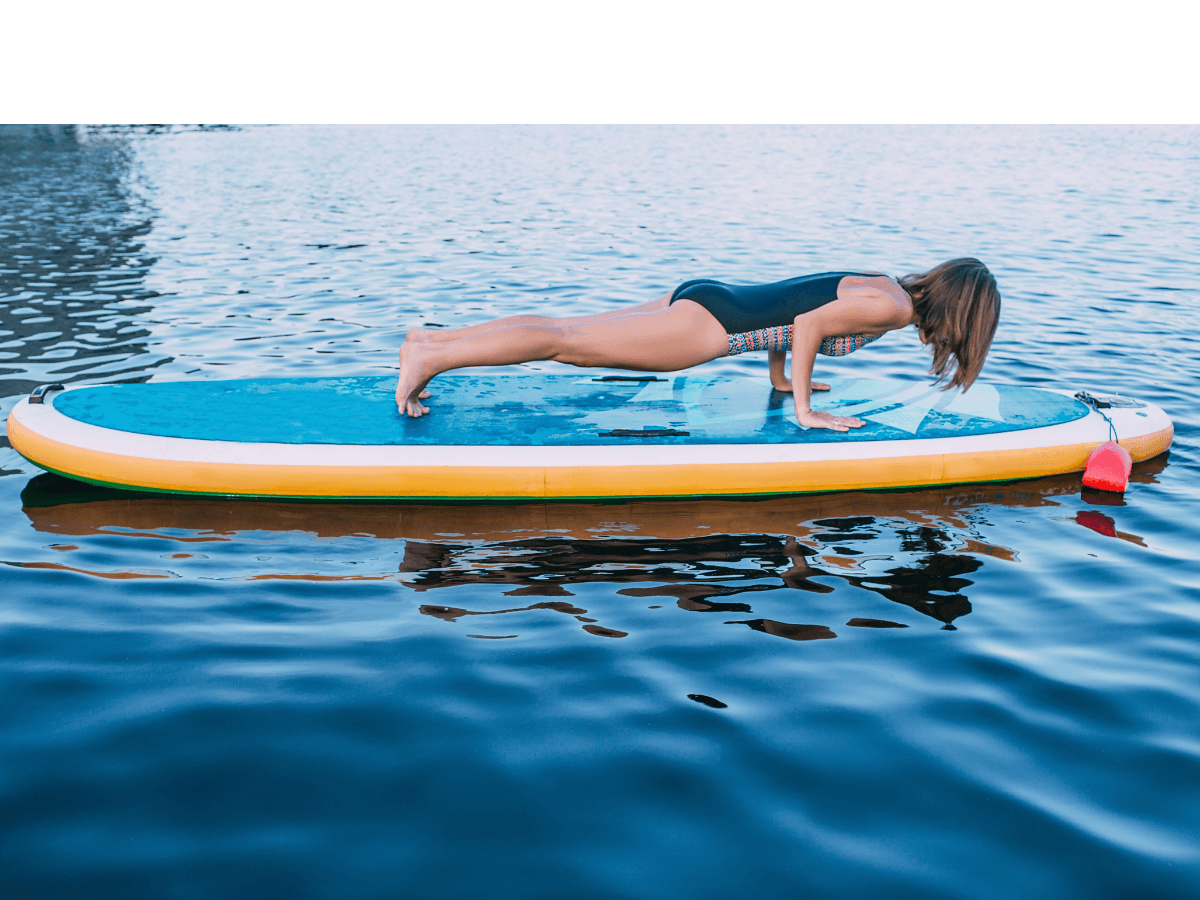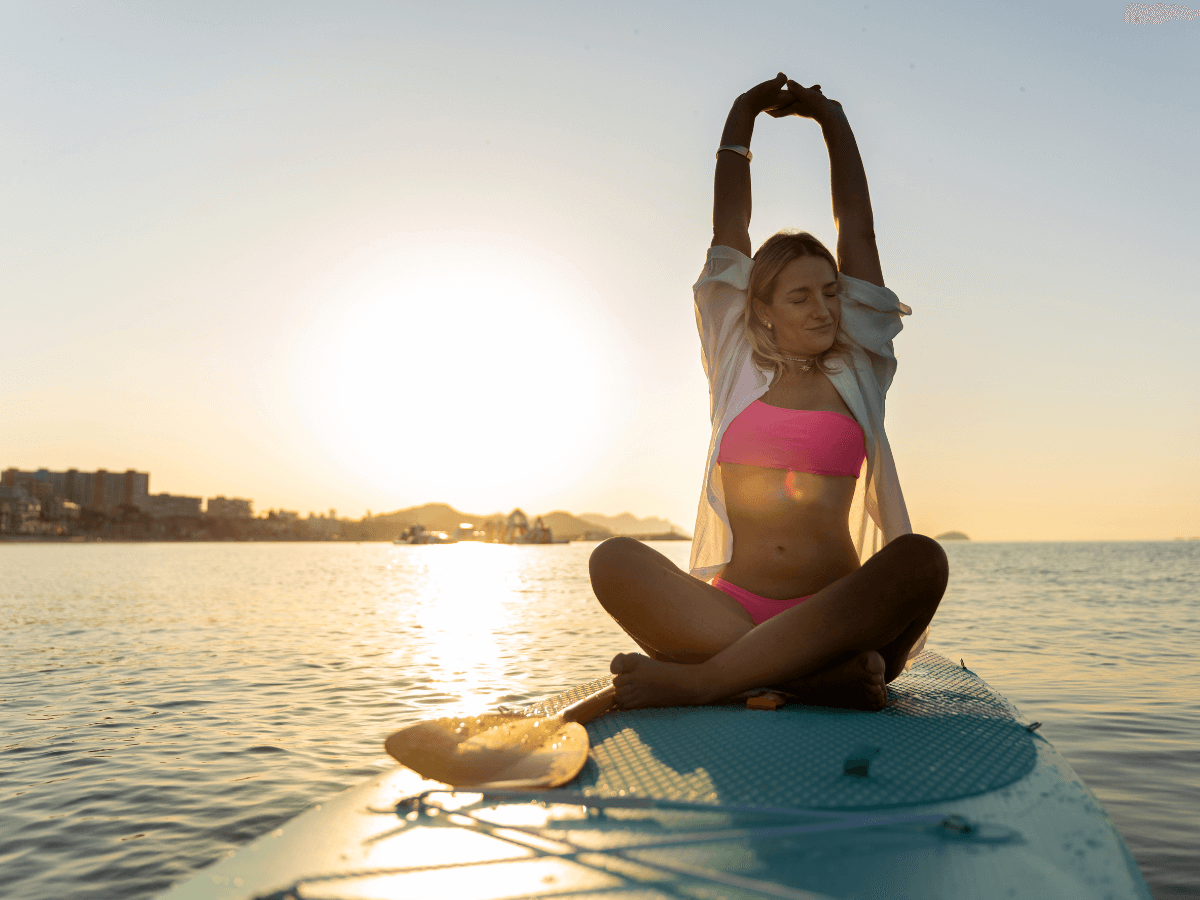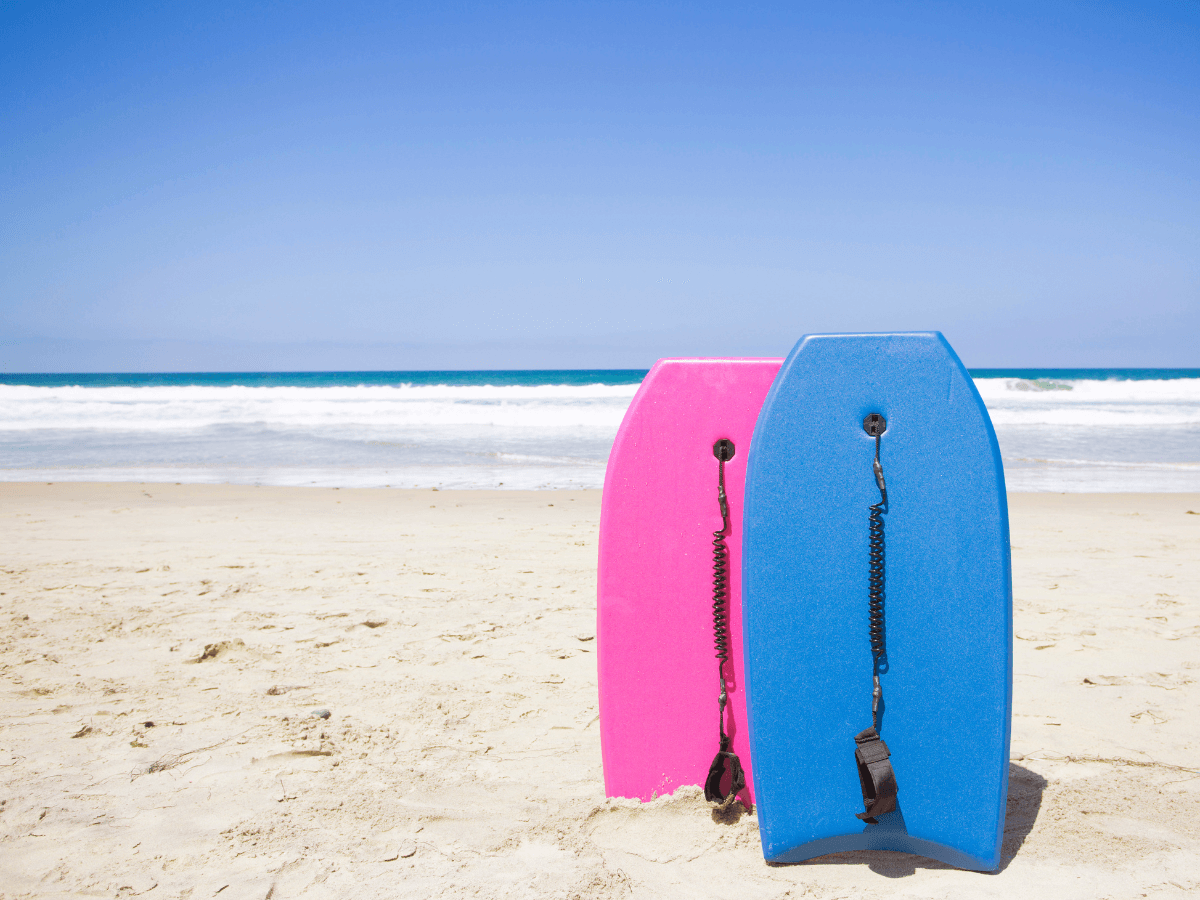If you’re looking for a fun and effective way to work on your core strength while enjoying the outdoors, SUP fitness might be just what you need. Stand-up paddleboarding (SUP) is already a great full-body workout, but when combined with targeted exercises, it becomes a powerful tool for building a stronger, more toned core.
Unlike gym-based routines, SUP fitness brings together resistance, balance, and bodyweight training in a dynamic outdoor setting. Your core is constantly working to keep you stable on the water, engaging muscles that are often overlooked in traditional workouts. It’s a fantastic way to challenge your body in new ways while enjoying the benefits of fresh air and nature.
In this blog, we’ll explore the best core-focused workouts you can do on your paddleboard – helping you improve your balance, posture, and muscle tone, all while floating peacefully on the water.
Why Choose SUP Fitness for Core Strength?
Paddleboarding naturally engages your abdominal muscles. To stay upright on an unstable surface, your core is constantly working to stabilise you. This makes every movement – whether it’s paddling or balancing – a mini workout in itself.
But when you intentionally incorporate exercises into your session, SUP becomes a mobile gym with the added benefits of nature, fresh air, and calm waters. Whether you’re a beginner or experienced paddler, SUP fitness helps you:
-
- Build deep core strength
-
- Improve coordination and balance
-
- Tone your abs, back, and obliques
-
- Boost mental wellbeing with mindful movement
Ready to take your SUP session up a notch? Here are some of the best core-strengthening exercises you can try right on your board:
1. SUP Planks
Planks are a staple core exercise, and doing them on a paddleboard takes them to the next level.
How to do it:
-
- Start in a high plank position, with your hands directly under your shoulders.
-
- Keep your core tight, back flat, and legs straight.
-
- Hold for 20-60 seconds.
Why it works: The slight movement of the board forces your deep stabilising muscles to work overtime, especially your transverse abdominis and obliques.
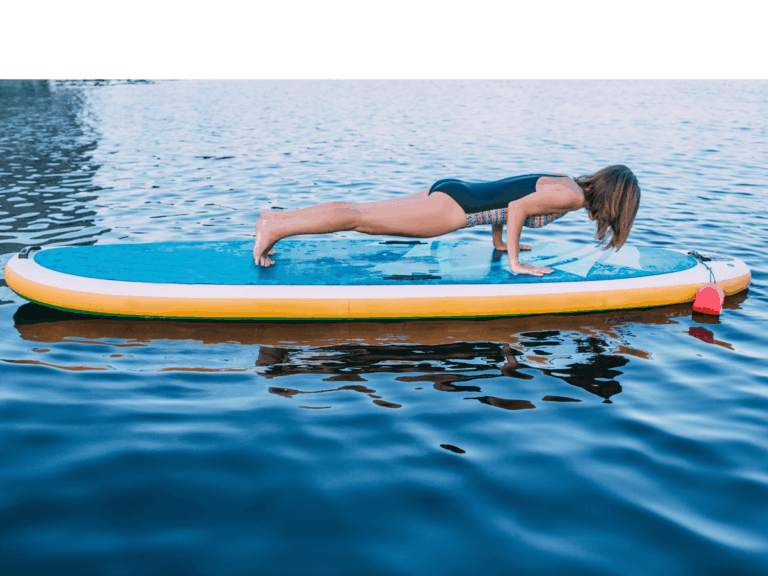
2. SUP Mountain Climbers
Add a bit of cardio while firing up your core with mountain climbers.
How to do it:
-
- Begin in a plank position.
-
- Drive one knee towards your chest, then switch legs in a quick, controlled motion.
-
- Continue for 30 seconds to 1 minute.
Pro tip: Keep your movements steady to avoid tipping the board.
3. Seated Russian Twists
Great for targeting the obliques and improving rotational strength.
How to do it:
-
- Sit on the centre of your board with knees bent and feet hovering slightly off the surface.
-
- Hold your paddle with both hands and twist from side to side, tapping the paddle on each side.
-
- Do 2-3 sets of 20 twists.
Modifications: If lifting your feet is too difficult, rest them lightly on the board until your balance improves.
4. SUP Leg Raises
An excellent move for the lower abs and hip flexors.
How to do it:
-
- Lie on your back on the paddleboard with your hands under your glutes.
-
- Slowly raise your legs to a 90-degree angle, then lower them back down without touching the board.
-
- Aim for 10-15 reps per set.
Focus: Engage your abs and move slowly to maintain control and balance.
5. SUP Side Planks
Side planks are perfect for targeting your obliques and improving lateral stability.
How to do it:
-
- Start on your side with one forearm on the board and your feet stacked or staggered.
-
- Lift your hips and hold for 30 seconds.
-
- Switch sides.
Challenge: Add a leg lift to increase the intensity.
6. Paddle Lunges with Twist
While not a traditional core move, lunges with a paddle twist activate your core through rotational movement and balance.
How to do it:
-
- Step one foot forward into a lunge position.
-
- As you lower, twist your torso to the same side as your front leg, holding the paddle across your chest.
-
- Return to standing and repeat on the other side.
Benefit: This move strengthens the core, legs, and improves paddle control.
SUP Fitness Tips for Success
-
- Start slow: Begin with simple movements and build up to more dynamic exercises as your balance improves.
-
- Stay centred: Always position yourself in the middle of the board for better stability.
-
- Choose calm waters: A quiet lake or sheltered bay is ideal for SUP workouts.
-
- Use a wide, stable board: Fitness-focused SUPs often have a larger surface area for better balance.
-
- Breathe and engage: Remember to breathe and actively engage your core throughout each move.
Make the Most of Your SUP Sessions
Combining paddleboarding with core workouts is a smart and enjoyable way to tone your core, boost your strength, and enhance your balance. Whether you’re squeezing in a few planks mid-paddle or planning a full SUP fitness routine, your core will thank you for the challenge.
So next time you hit the water, don’t just paddle – plank, twist, and lunge your way to a stronger you.
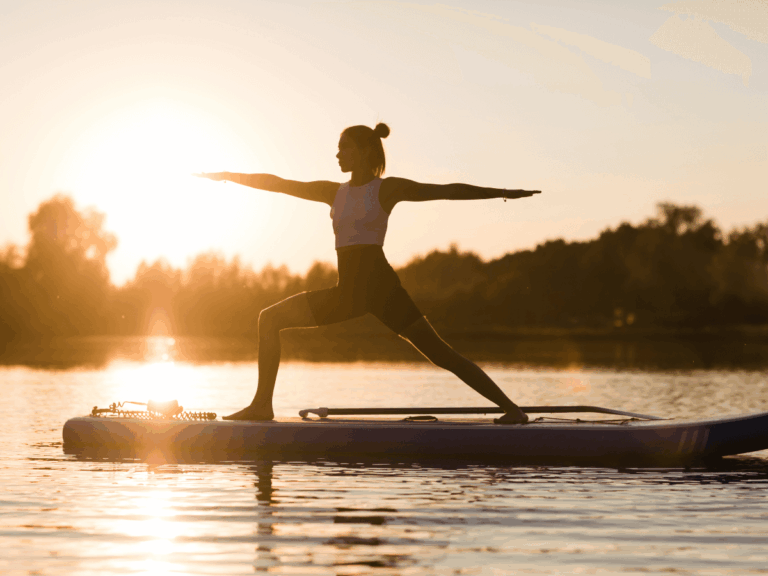
FAQs
Is SUP good for core strength?
Yes! SUP naturally engages your core due to the need for balance. Adding specific exercises like planks and Russian twists can further strengthen your abdominal muscles.
Do I need to be experienced at paddleboarding to try SUP fitness?
Not at all. Beginners can start with basic exercises on calm water and progress as their confidence and balance improve.
What equipment do I need for SUP fitness?
You’ll need a stable paddleboard, a paddle, and ideally a leash and personal flotation device (PFD). A fitness-specific SUP board is helpful but not essential.
How often should I do SUP fitness workouts?
Aim for 2–3 sessions per week for noticeable improvements in core strength and overall fitness.

